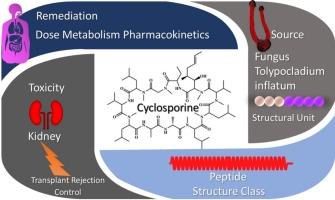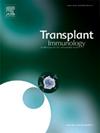Cyclosporine: Immunosuppressive effects, entwined toxicity, and clinical modulations of an organ transplant drug
IF 1.6
4区 医学
Q4 IMMUNOLOGY
引用次数: 0
Abstract
The discovery and use of cyclosporine since its inception into the clinics in the ‘70s and up have played a crucial role in advancing transplant therapy, and containment of the immune-based rejections. The drug has improved the high rates of acute rejections and has supported early graft survival. However, the long-term survival of renal allografts is still less prevalent, and an in-depth analysis, as well as reported findings led us to believe that there is a chronic irreversible component to the drug, that is tackled through its metabolites, and that causes toxicity, which has led to new therapies, including monoclonal antibody-based medications. A recap of the immunosuppressive effects, and entwined toxicity of the drug, now relegated primarily to bone marrow early transplants, is being overviewed for the past protocols that were used to minimize, and avoid, or use this calcineurin inhibitor class of drug, cyclosporine, in combination with other drugs. The current review circumvents the cyclosporine's mechanism of action, pathophysiology, cytochrome roles, and other factors associated with acute and chronic toxicity developments. The review also attempts to find conclusive strategies reported in the recent studies to avoid its toxic side effects, and develop a safe-use strategy for the drug. Gastrointestinal decontamination, supporting the airway, monitoring for signs of respiratory insufficiency, monitoring for severe reactions, such as seizures, need for administration of oxygen, and avoiding the administration of drugs, that increase the blood levels of the cyclosporine, are beneficial interventions, when encountering cyclosporine toxicity cases. The constrained therapeutic outcomes have also led to redesign, and making use of combined formulations to reassess the pharmacokinetics of the drug.

环孢素的免疫抑制作用、纠缠不清的毒性以及器官移植药物的临床调整。
自上世纪 70 年代环孢素进入临床以来,它的发现和使用在促进移植治疗和控制免疫排斥方面发挥了至关重要的作用。这种药物提高了急性排斥反应的发生率,并有助于早期移植的存活。然而,肾脏同种异体移植的长期存活率仍然较低,深入的分析和报告结果让我们相信,这种药物存在一种慢性不可逆成分,通过其代谢物来解决,并导致毒性,从而产生了新的疗法,包括基于单克隆抗体的药物。回顾一下这种药物的免疫抑制作用和缠绕在一起的毒性,现在这种药物已不再用于实体移植,综述了过去用于尽量减少和避免这种降钙素抑制剂类药物或与其他药物联合使用的方案。本综述回避了环孢素的作用机制、病理生理学、细胞色素的作用以及与急性和慢性毒性相关的其他因素。它还试图找到近期研究中报道的避免其毒副作用的确凿策略,并制定该药物的安全使用策略。在遇到环孢素中毒病例时,胃肠道净化、支持呼吸道、监测呼吸功能不全的迹象、监测严重反应(如癫痫发作)、给氧以及避免使用会增加环孢素血药浓度的药物都是有益的干预措施。受限的治疗效果也促使人们重新设计和组合配方,以审查药物的药代动力学。
本文章由计算机程序翻译,如有差异,请以英文原文为准。
求助全文
约1分钟内获得全文
求助全文
来源期刊

Transplant immunology
医学-免疫学
CiteScore
2.10
自引率
13.30%
发文量
198
审稿时长
48 days
期刊介绍:
Transplant Immunology will publish up-to-date information on all aspects of the broad field it encompasses. The journal will be directed at (basic) scientists, tissue typers, transplant physicians and surgeons, and research and data on all immunological aspects of organ-, tissue- and (haematopoietic) stem cell transplantation are of potential interest to the readers of Transplant Immunology. Original papers, Review articles and Hypotheses will be considered for publication and submitted manuscripts will be rapidly peer-reviewed and published. They will be judged on the basis of scientific merit, originality, timeliness and quality.
 求助内容:
求助内容: 应助结果提醒方式:
应助结果提醒方式:


